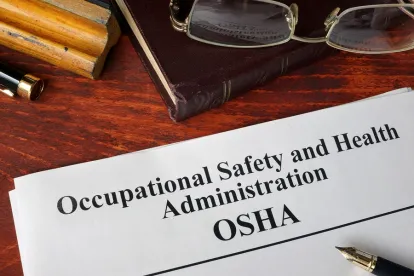During the April 12th U.S. Senate Committee on Appropriation’s Subcommittee Hearing to review the FY2019 Department of Labor Budget Request, Labor Secretary Alexander Acosta was questioned on OSHA’s injury and illness record-keeping regulation passed under Obama’s administration, Improve Tracking of Workplace Injuries and Illnesses.
The focus of the questioning centered on weighing the usefulness and necessity of OSHA gathering information for enforcement against the risk of divulging employee’s personal information in a public forum. Senator Tammy Baldwin (D-WI) questioned Secretary Acosta who, in part, defended the rule, although admitting that the Agency “intends to publish a notice of proposed rulemaking to reconsider, revise, or remove portions of that rule in 2018.” Secretary Acosta said that he believes the data gathered allows OSHA to better focus its enforcement inspections, saying that in the aggregate the information is useful and necessary so OSHA can focus inspections “on where injuries are occurring and what types of injuries.” The difficulty arises in collecting that data in a manner which prevents personal identifiable information from being included. Sen. Baldwin pointed out that other agencies have been able to achieve this, saying “I would hope this would be a pretty straightforward task.” Acosta refuted that statement and again noted that collecting injury and illness data in the aggregate is useful and necessary to assisting OSHA with targeted inspections.
In last year’s Unified Regulatory Agenda, OSHA noted that it cannot guarantee that personally identifiable information will not be released and therefore, the Agency will not make the information publicly available. OSHA does not currently intend to post employer data on its website as previously planned. This in turn has led to questions about the Agency’s motive for not publishing the data – the rationale being that under the Obama administration, the task of removing individual identifiable data had been discussed and resolved.
Since this regulation was first proposed, employers have been concerned not only about the privacy of employee information, but also about how such information, which is based off a no-fault recordkeeping system, fails to provide an accurate picture of safety and health in a workplace. For example, when an employer does training on ergonomic related injuries there is typically a spike in the number of musculoskeletal disorder related cases on an employer’s OSHA 300 Log. This is due to the awareness that has been recently provided to employees, not to an unsafe working environment. OSHA would expect to see this pattern and has said as much in the past. Yet, to now rely on this data to suggest a particular employer has a poor history of workplace safety and health or suggest that such a place of employment is not safe is entirely misleading and contrary to the intent of OSHA’s no-fault recordkeeping system.
OSHA is still expected to issue a Notice of Proposed Rulemaking proposing to reconsider, revise or remove parts of the regulation.




 />i
/>i
